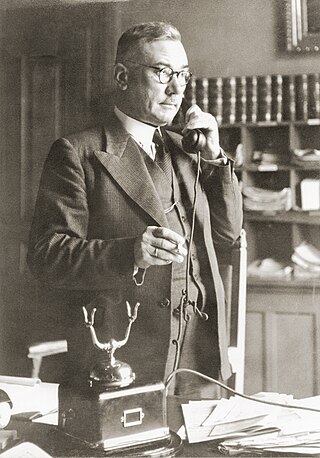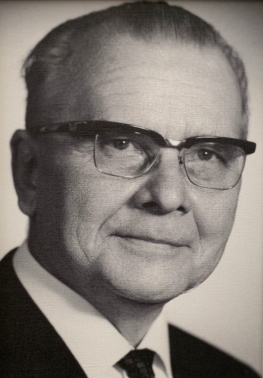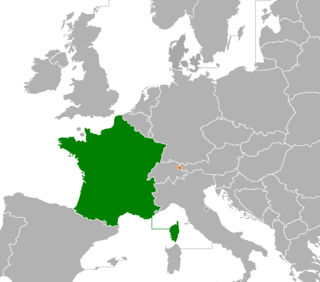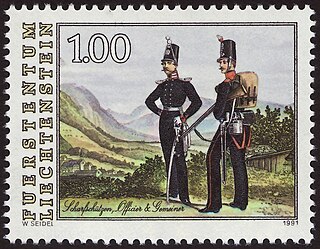Related Research Articles

Political identity came to the territory now occupied by the Principality of Liechtenstein in 814, with the formation of the subcountry of Lower Rhætia. Liechtenstein's borders have remained unchanged since 1434, when the Rhine established the border between the Holy Roman Empire and the Swiss cantons.

Operation Tannenbaum, known earlier as Operation Grün ("Green"), was a planned invasion of Switzerland and Liechtenstein by the Axis Powers during World War II.

Franz Joseph II was the reigning Prince of Liechtenstein from 25 July 1938 until his death in November 1989.

The German National Movement in Liechtenstein was a Nazi party in Liechtenstein that existed between 1938 and 1945.

Alexander Frick was a political figure from Liechtenstein who served as Prime Minister of Liechtenstein from 1945 to 1962.
Liechtensteiner Vaterland is the largest daily newspaper in Liechtenstein. Published by Vaduzer Medienhaus AG, it is the official newspaper of the Patriotic Union party.

Franz Josef Hoop was a diplomat and political figure from Liechtenstein who served as Prime Minister of Liechtenstein from 1928 to 1945.
The Christian-Social People's Party, often shortened to People's Party, was a social liberal political party in Liechtenstein. Founded in 1918, the Christian-Social People's Party and the Progressive Citizens' Party (FBP) were the first political parties in Liechtenstein.
Alfons Goop was a Liechtensteiner politician during World War II. He was the leader of the German National Movement in Liechtenstein from 1940 to 1943, a Nazi Party that aimed to unify with Nazi Germany.

Germany–Liechtenstein relations are the diplomatic relations between Germany and Liechtenstein. Both states are members of the Organization for Security and Cooperation in Europe (OSCE), the Council of Europe and the European Economic Area.

Otto Schaedler was a physician and political figure from Liechtenstein who served in the Landtag of Liechtenstein and was one of the founders of the Patriotic Union party.

Alois Vogt was an advocate and political figure from Liechtenstein who served as the Deputy Prime Minister of Liechtenstein from 1938 to 1945.

Ludwig Marxer was an advocate and political figure from Liechtenstein who served as the Deputy Prime Minister of Liechtenstein from 1928 to 1933.

The third Josef Hoop cabinet was the governing body of Liechtenstein from 30 March 1938 to 9 November 1944. It was appointed by Franz Joseph II and chaired by Josef Hoop.
The 1939 Liechtenstein putsch, also known as the Annexation putsch was an unsuccessful coup d'état by the German National Movement in Liechtenstein designed to provoke Liechtenstein's annexation by Nazi Germany.
Theodor Schädler was a politician from Liechtenstein. He was the leader of the German National Movement in Liechtenstein from 1938 to 1939, a Nazi Party that aimed to unify with Nazi Germany.
Richard Meier was a dentist and political figure from Liechtenstein who served as the President of the Progressive Citizens' Party from 1945 to 1970.

Foreign relations between France and Liechtenstein date back to the Napoleonic wars. Both countries established diplomatic relations on 27 August 1992. Since then, relations between the two countries have been stable.

The Rotter kidnapping was a failed organized kidnapping in Liechtenstein of Fritz Rotter and Alfred Rotter, German film directors and theatre managers of Jewish background, by Liechtenstein citizens sympathetic to Nazi Germany. The attack was additionally supported by five German nationals within the country.

The military history of Liechtenstein originates back to its predecessors in the County of Vaduz and Lordship of Schellenberg. Liechtenstein disbanded its army in 1868, and has had no standing army since. However, under the constitution of Liechtenstein citizens are still obligated to defend the country in the event of an external threat and the army may be reformed if deemed necessary.
References
- 1 2 3 Marxer, Wilfried (31 December 2011). "Heimattreue Vereinigung Liechtenstein". Historisches Lexikon des Fürstentums Liechtenstein (in German). Retrieved 17 November 2023.
- ↑ Büchel, Donat (31 December 2011). "Anschlussputsch". Historisches Lexikon des Fürstentums Liechtenstein (in German). Retrieved 14 November 2023.
- ↑ "Ninety-Five Per Cent of Voters in Liechtenstein Reject Union with Nazis". Lawrence Journal-World . 3 April 1939. Retrieved 29 January 2024.
- ↑ Peter Geiger (2010). Kriegszeit. Liechtenstein 1939 bis 1945 (in German). Vaduz: Liechtenstein Institute. p. 846.